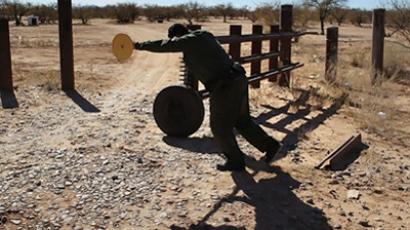Deadly chase: Arizona desert becomes immigrant deathtrap
Arizona remains the deadliest state for illegal border crossings, with 71 bodies recovered in the past six months alone. Beefed-up US security along the Mexican border does not stop immigrants from trying – instead, it pushes them into a killer desert.
With its rocky valleys and spectacular peaks, the Sonora desert in Arizona is said to be a treasure of the American southwest. But at the same time is a frontier land where a deadly conflict is underway.Every year thousands of people from Mexico and other parts of Latin America try to make it to the US by illegally crossing the border. But scores of people never reach the American dream for which they risked their lives. In 2011, there were nearly 200 (figures vary from 183 to 192) migrant body remains recovered. Even though the number has decreased about 20 per cent compared to 2010, the rate of migrant deaths remains consistently high.”It’s deadlier. The border is absolutely deadlier,” says Kat Rodriguez, from the Arizona NGO Coalición de Derechos Humanos. More than 6,000 have died along the US-Mexico border since 1994, according to human rights groups. That is when Operation Gatekeeper – a program fortifying the international crossing with high-priced fencing, thousands of agents, and high tech surveillance – was launched. “It’s almost a mass disaster situation,” says Dr. Gregory Hess, chief medical examiner at Pima County, Arizona.The disaster Hess faces is the growing number of unidentified bodies being found in Arizona’s southern desert. Bodies are stacked high in a fight for space – and perhaps even a proper burial.“It becomes not so much an effort to determine why that person died… it becomes an effort to sort out who this is,” Hess says. Many remains found in the desert are merely bone fragments, making them difficult to identify. In other cases, remains of the missing are never found. The Pima County cooler at the Medical Examiner’s office has a capacity to hold hundreds of bodies. The facility is much larger than others around the country, specifically because of the issue of bodies being found along the border.Even so, the lack of storage is a major headache.“We had 300 remains. We had a refrigerated truck parked out here to help us with the overflow,” Hess says.
Meanwhile, the Department of Homeland Security recently boasted of a sharp drop in border patrol arrests, suggesting the government’s crackdown has helped curb illegal entry to the country.Policy makers thought pushing the immigrant flow to deserts would deter migration. Instead it has led to what some call a deathtrap.“The reality is that militarizing borders does not control migration,” Kat Rodriguez says.
The US government has tightened security along the nearly 3,220 km border with Mexico in recent years, adding additional fencing, surveillance technologies and Border Patrol agents.“There’s no way we can end migrant deaths without looking at the causes of migration. Stop asking how we stop them from coming, but ask why they are coming?” Rodriguez told theprecarious.com in January.













